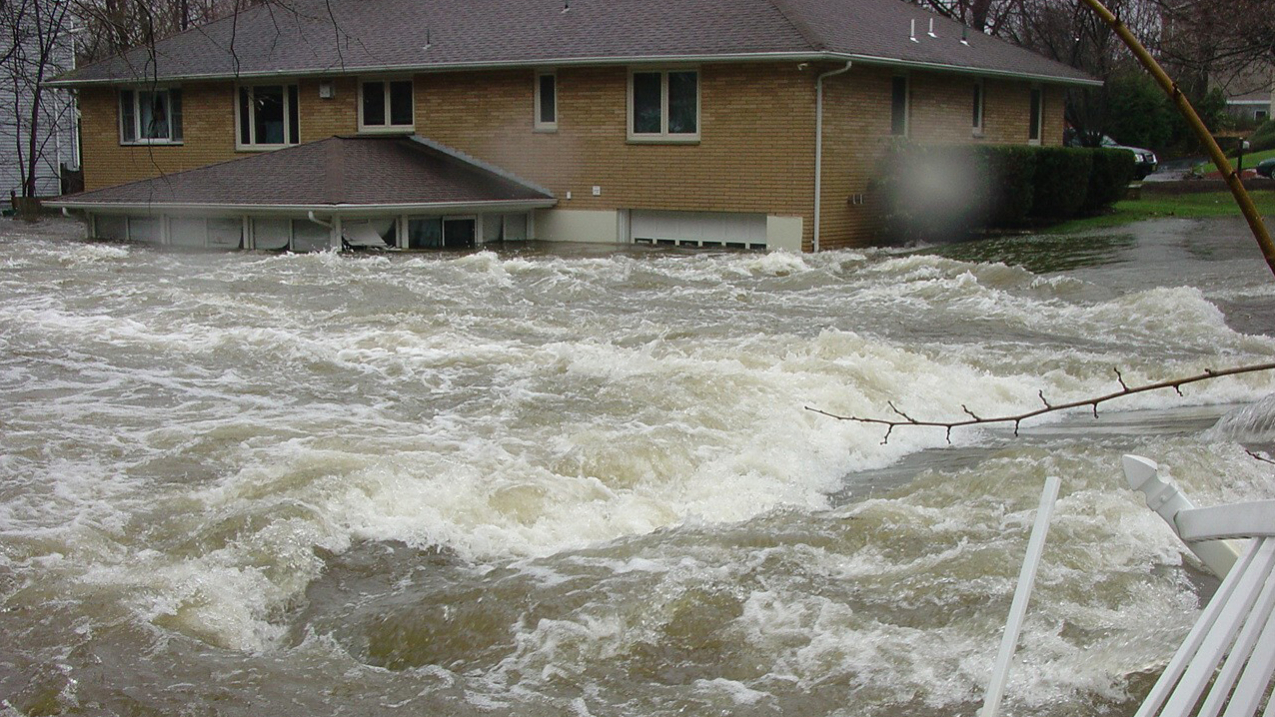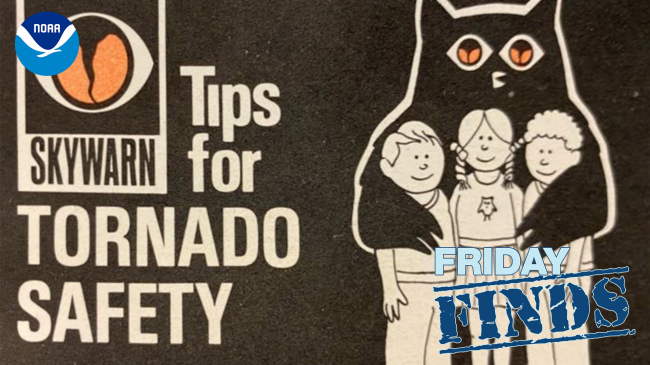Be safe and smart about floods
Did you know fast moving water just above your ankles can knock you off your feet?
Each year, more deaths occur due to flooding than from any other thunderstorm related hazard. Many of these deaths occur in automobiles as they are swept downstream and are preventable. But too many people continue to drive around the barriers that warn you the road is flooded. You won't know the depth of the water nor will you know the condition of the road under the water. Whether you are driving or walking, if you come to a flooded road, Turn Around Don't Drown!

Flood. (Image credit: USGS)
Most flash floods are caused by slow moving thunderstorms, thunderstorms that move repeatedly over the same area or heavy rains from tropical storms and hurricanes. These floods can develop within minutes or hours depending on the intensity and duration of the rain, the topography, soil conditions and ground cover.
Flash floods can roll boulders, tear out trees, destroy buildings and bridges, and scour out new channels. Rapidly rising water can reach heights of 30 feet or more. Flash flood-producing rains also can trigger catastrophic mud slides.

Occasionally, floating debris or ice can accumulate at a natural or man-made obstruction and restrict the flow of water. Water held back by the ice jam or debris dam can cause flooding upstream. Subsequent flash flooding can occur downstream if the obstruction should suddenly release.
How to be flood safe
- Monitor the NOAA Weather Radio All Hazards, or your favorite news source for vital weather related information.
- If flooding occurs, get to higher ground. Get out of areas subject to flooding. This includes dips, low spots, canyons, washes etc.
- Avoid areas already flooded, especially if the water is flowing fast. Do not attempt to cross flowing streams. Turn Around Don't Drown!
- Road beds may be washed out under flood waters. NEVER drive through flooded roadways.Turn Around Don't Drown! If your vehicle is suddenly caught in rising water, leave it immediately and seek higher ground.
- Do not camp or park your vehicle along streams and washes, particularly during threatening conditions.
- Be especially cautious at night when it is harder to recognize flood dangers.
What kinds of flooding alerts does NOAA issue?
- Flash flood or flood watch: Flash flooding or flooding is possible within the designated watch area — be alert.
- Flash flood or flood warning: Flash flooding or flooding has been reported or is imminent — take necessary precautions at once!
- Urban and small stream advisory: Flooding of small streams, streets and low-lying areas, such as railroad underpasses and urban storm drains is occurring.
- Flash flood or flood statement: Follow-up information regarding a flash flood/flood event.
What is NOAA doing about floods and flash floods?
NOAA scientists are figuring out ways to blend data from radar, satellite, lightning, and rain gauges to improve flash flood monitoring and prediction. This will help overcome significant challenges in estimating precipitation type and amount.
NOAA's Office of Oceanic and Atmospheric Research is working hard to improve warnings and forecasts of floods and flash floods. By investigating the meteorological causes of flash flooding and working on flash flood and river flood warning decision making tools, we hope to see more lives saved and less property destroyed.
March 16-22 (2014) is National Flood Safety Awareness Week
For more information about any floods in your area, visit www.weather.gov.



